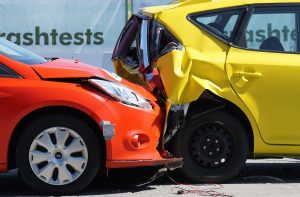Evolution of Automotive Safety Regulations
In our blog last week, we looked at what automotive safety is, why it is important and how automotive safety has evolved over the years. Just in case you happen to have missed that blog, you can quickly have a look here. Today, we shall look at the evolution of safety programmes and regulations and their role in promoting and furthering vehicle safety.
Vehicle safety has developed tremendously through the years. Right from simple equipment such as windshield wipers to more complex features such as Advanced Driver Assistance Systems (ADAS), automotive safety has evolved due to technological advances and needs as well as through certain regulations and programmes. These regulations and programmes have ensured that certain safety features are made mandatory in order to ensure a minimum level of safety for a vehicle.
Why are regulations needed and how did they evolve?
 While it is true that most accidents and collisions occur due to the driver’s error, the importance of designing cars to be safer cannot be understated. Design flaws in an automotive can highly affect car and passenger safety. Towards the end of the 1920s, automotive OEMs realized that structural designs contributed to accidents, injuries, and sometimes, fatalities. Many OEMs started providing four-wheel brakes instead of just the rear brakes. Others introduced shatterproof windshields so as to prevent the glass from breaking into sharp pieces and causing damage in the unfortunate event of an accident. As these automakers started working proactively to introduce safety features, some safety features such as seatbelts, though available, weren’t yet necessarily added.
While it is true that most accidents and collisions occur due to the driver’s error, the importance of designing cars to be safer cannot be understated. Design flaws in an automotive can highly affect car and passenger safety. Towards the end of the 1920s, automotive OEMs realized that structural designs contributed to accidents, injuries, and sometimes, fatalities. Many OEMs started providing four-wheel brakes instead of just the rear brakes. Others introduced shatterproof windshields so as to prevent the glass from breaking into sharp pieces and causing damage in the unfortunate event of an accident. As these automakers started working proactively to introduce safety features, some safety features such as seatbelts, though available, weren’t yet necessarily added.
In the 1930s, the continuing rate of automotive-related fatalities made people look for explanations other than simply driver error. It was found that the driver and passengers were seriously or fatally injured due to collision with the dashboard, steering wheel, windshield or even the vehicle doors. Knobs, handles and other fixtures acted like sharp projections which could greatly harm the driver and passengers. As a result, padded dashboards and collapsible steering columns were introduced.
 The importance of testing the crashworthiness of a car before it hits the road can similarly not be understated. The year 1934 marks the beginning of the car safety testing, when General Motors conducted the first barrier crash test. Crash tests proved that it was safer and better to be fastened inside a car than to be thrown out during an accident. As a result of such tests and the findings from these tests, laws and regulations were passed such as the mandating of a seatbelt and a padded dashboard, e.g. Australia became the first country in the world in 1970 to mandate wearing of seatbelts. Thus, regulations played the all-important role of ensuring that factors other than driver error were addressed by the installation of these safety features in vehicles by OEMs, thereby ensuring a safer car, and consequently playing a critical role in averting crashes and reducing the likelihood of serious injury.
The importance of testing the crashworthiness of a car before it hits the road can similarly not be understated. The year 1934 marks the beginning of the car safety testing, when General Motors conducted the first barrier crash test. Crash tests proved that it was safer and better to be fastened inside a car than to be thrown out during an accident. As a result of such tests and the findings from these tests, laws and regulations were passed such as the mandating of a seatbelt and a padded dashboard, e.g. Australia became the first country in the world in 1970 to mandate wearing of seatbelts. Thus, regulations played the all-important role of ensuring that factors other than driver error were addressed by the installation of these safety features in vehicles by OEMs, thereby ensuring a safer car, and consequently playing a critical role in averting crashes and reducing the likelihood of serious injury.
Timeline of Important Safety Regulations
The World Forum for Harmonization of Vehicle Regulations came into existence in 1958, which was established by the United Nations. This international standards body was responsible for bringing to market many safety features such as seatbelts and roll cage construction. This agreement in 1958 detailed uniform technical prescriptions for type approval of vehicles and their systems as well as components. These make up the legal framework for the ECE regulations. Today, this agreement is formally known as UN Regulations, as a number of non-European countries are also part of the agreement. Enforcement of safety standards, however, did not begin till the late 1960s. In 1966, it was mandated that cars built in Europe must be fitted with padded dashboards, along with front and rear lap belts as also white reverse lights became mandatory. Across the Atlantic in 1968, the first Federal Motor Vehicle Safety Standards (FMVSS) in the United States made it mandatory to have collapsible steering columns, side marker lights, and front-seat shoulder belts in all vehicles. As already mentioned previously, the world’s first ever seatbelt law was put in place by Australia, making it mandatory for drivers and front-seat passengers to wear seatbelts.
 Towards the end of the decade, in 1979, the National Highway Traffic Safety Administration (NHTSA) in United States began crash testing new cars and releasing the results, so as to promote consumer awareness and encourage OEMs to improve existing safety standards of their vehicles. The 1980s saw a spate of regulations being mandated in different parts of the world. In the United Kingdom, wearing of front seatbelts became mandatory in 1983. The New York State passed the first U.S. law mandating seat belt use in passenger cars in 1984 and subsequently in 1986, the central 3rd brake light was mandated in North America with most of the world following with similar standards in automotive lighting. Fitment of rear seatbelts became compulsory in the UK in 1987.
Towards the end of the decade, in 1979, the National Highway Traffic Safety Administration (NHTSA) in United States began crash testing new cars and releasing the results, so as to promote consumer awareness and encourage OEMs to improve existing safety standards of their vehicles. The 1980s saw a spate of regulations being mandated in different parts of the world. In the United Kingdom, wearing of front seatbelts became mandatory in 1983. The New York State passed the first U.S. law mandating seat belt use in passenger cars in 1984 and subsequently in 1986, the central 3rd brake light was mandated in North America with most of the world following with similar standards in automotive lighting. Fitment of rear seatbelts became compulsory in the UK in 1987.
The Insurance Institute for Highway Safety (IIHS) began conducting frontal offset and side impact crash tests in 1995 and 2003 respectively. The following year, in 2004, NHTSA released new tests designed to test the rollover risk of new cars and SUVs, in which only the Mazda RX-8 managed to get a 5-star rating. In the European Union (EU), it was mandated for new cars to have a brake assist system from 2011. In the US, starting in 2012, it is compulsory for all cars to be equipped with Electronic Stability Control (ESC). Along the same lines, the European Union also mandated the use of Electronic Stability Program (ESP), Tire Pressure Monitoring System (TPMS), driver seatbelt reminder and the ISOFIX system in 2014. Antilock Braking System (ABS) became a compulsory feature on motorcycles in the EU from 2016. Reverse cameras became mandatory in the US since 2018. The EU legislated to revise the General Safety Regulation (GSR) in 2019, which includes safety features such as Advanced Emergency Braking (AEB), Lane Departure Warning Systems (LDWS), Safety belt warning system for all seats, Reversing Detection, etc.
Democratizing vehicle safety – New Car Assessment Programme (NCAP)
A New Car Assessment Programme (NCAP) is originally a government-initiated car safety programme whose task has been to evaluate and rate new automotive designs for their performance against different safety threats. The first ever NCAP came into existence in 1979 in the US. The objective of establishing this programme was to encourage manufacturers to build safer cars and for consumers to buy them. Over time, the test results were published, and ratings system was developed, so as to make it simpler for the consumers to understand the system.
 Based on the American model, the European New Car Assessment Programme (Euro NCAP) was formed in 1997 by the Transport Research Laboratory for the UK Department for Transport. The Euro NCAP was backed by a number of governments across Europe as well as by the EU. Euro NCAP also conducts crash tests and publishes the results in the form of star ratings. The Renault Laguna became the first car to score a 5-star safety rating in the Euro NCAP in the year 2001. Similar programmes are also prevalent in other areas of the world such as the Australasian New Car Assessment Program (ANCAP) in Australia and New Zealand, Latin NCAP for Latin America and China – New Car Assessment Programme (C-NCAP) in China.
Based on the American model, the European New Car Assessment Programme (Euro NCAP) was formed in 1997 by the Transport Research Laboratory for the UK Department for Transport. The Euro NCAP was backed by a number of governments across Europe as well as by the EU. Euro NCAP also conducts crash tests and publishes the results in the form of star ratings. The Renault Laguna became the first car to score a 5-star safety rating in the Euro NCAP in the year 2001. Similar programmes are also prevalent in other areas of the world such as the Australasian New Car Assessment Program (ANCAP) in Australia and New Zealand, Latin NCAP for Latin America and China – New Car Assessment Programme (C-NCAP) in China.
The Global New Car Assessment Programme (Global NCAP) is a major project of the Towards Zero Foundation which is a UK registered charity. The objective of the Global NCAP is to serve as a platform for co-operation among NCAPs worldwide and to promote the universal adoption of the UN’s most important automotive safety standards around the globe. The Global NCAP envisions all new cars in production exceeding minimum UN crash test standards, for pedestrian protection, and for electronic stability control by 2020. Global NCAP encourages the democratisation of vehicle safety by promoting the best practice application of automotive design and technology all over the world. An important part of Global NCAP’s vision is to promote consumer information, thereby to encourage a market for safer and more sustainable vehicles.
 The Global NCAP supports NCAPs in emerging markets by offering technical support guidance and quality assurance. It provides a platform for them to co-operate and collaborate in order to facilitate exchange of information and to promote the use of customer information to promote manufacturing of safer vehicles. Furthermore, the Global NCAP’s mission includes promoting proven safety technologies and their accelerated usage in the world through awareness. Policy making is promoted by supporting training initiatives in vehicle safety regulatory and rating systems, and achievements as well as innovations not only in safety technologies but also in products is recognised through a global awards scheme by Global NCAP.
The Global NCAP supports NCAPs in emerging markets by offering technical support guidance and quality assurance. It provides a platform for them to co-operate and collaborate in order to facilitate exchange of information and to promote the use of customer information to promote manufacturing of safer vehicles. Furthermore, the Global NCAP’s mission includes promoting proven safety technologies and their accelerated usage in the world through awareness. Policy making is promoted by supporting training initiatives in vehicle safety regulatory and rating systems, and achievements as well as innovations not only in safety technologies but also in products is recognised through a global awards scheme by Global NCAP.
In conclusion, safety regulations and new car assessment programmes contribute to ensuring safer and sustainable vehicles as much as safety features themselves. Through democratisation of automotive safety practices and standards all across the world, these safety regulations and NCAPs aspire for a world free from road fatalities and serious injuries and damage.
Your feedback and comments are highly appreciated! Feel free to write to us at response@quanzen.com. For more blogs related to the automotive industry, please visit us at www.quanzen.com!




